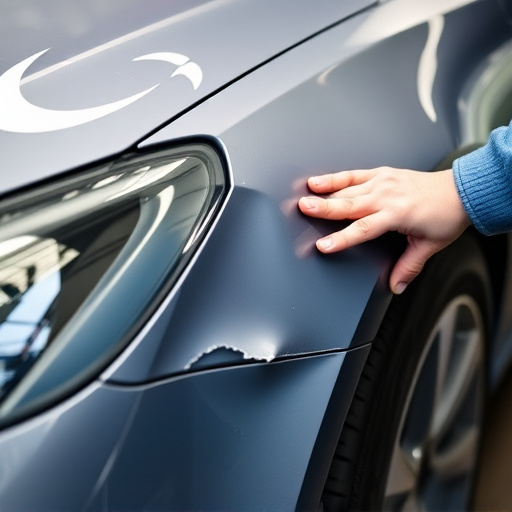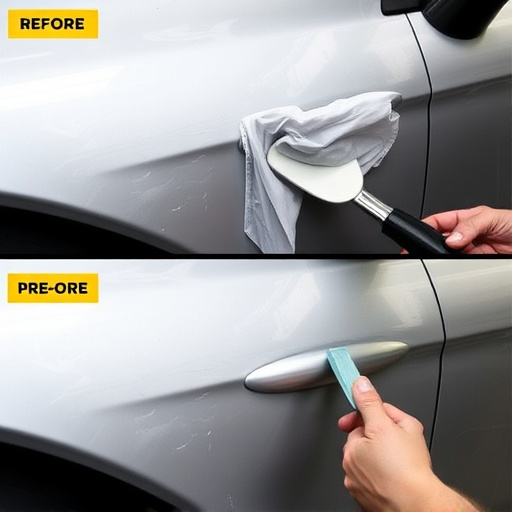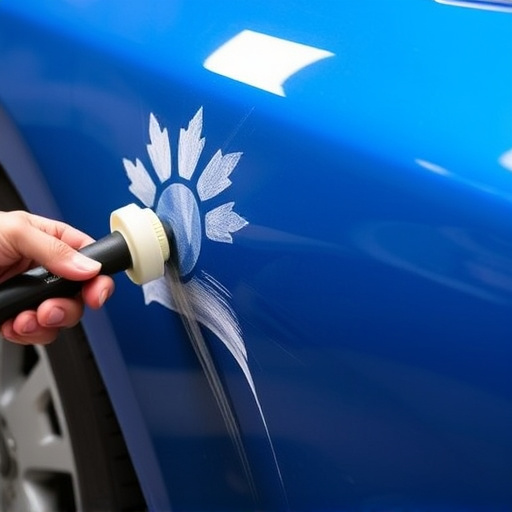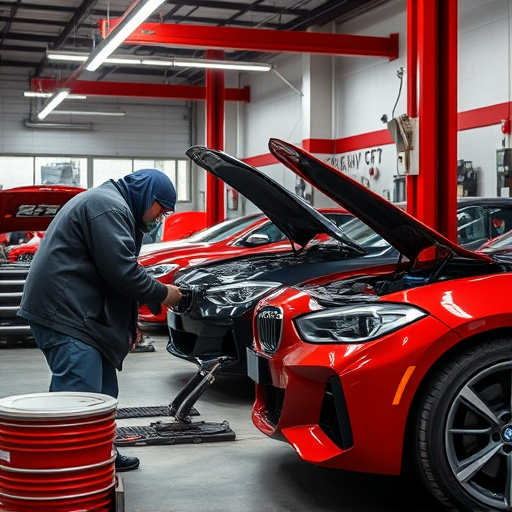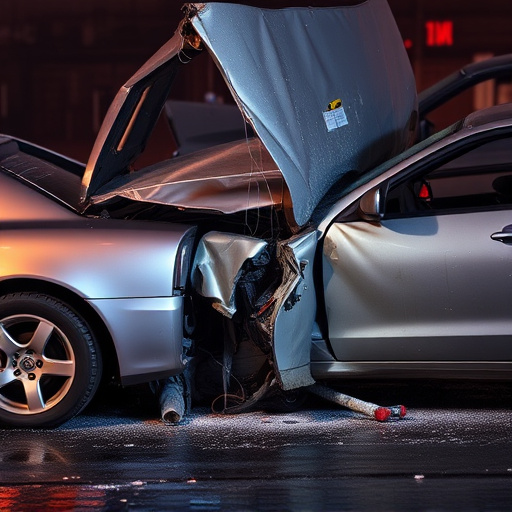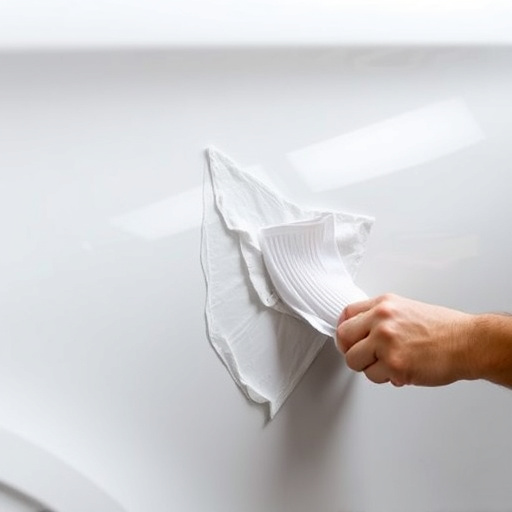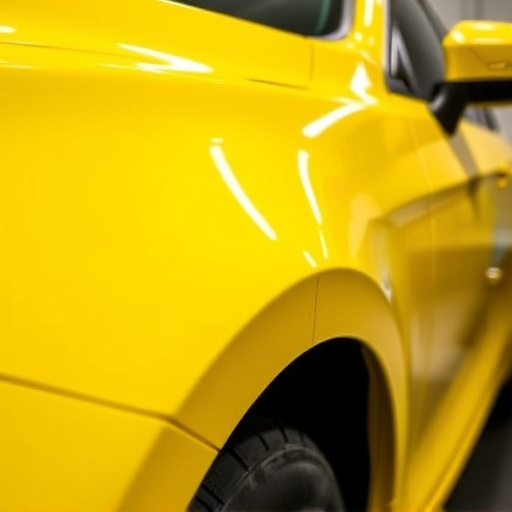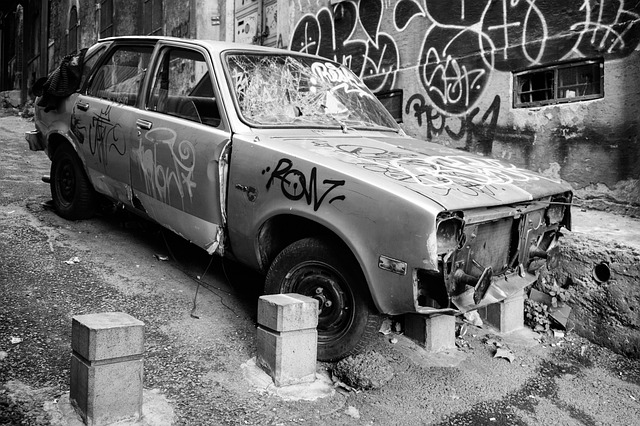Bent exhaust pipes are common after automotive accidents, with damage ranging from minor bends to complete deformation. Mechanics use diagnostic tools for assessment and employ techniques like straightening or replacing components. Exhaust system collision repair is a specialized field requiring expert knowledge due to the system's vulnerability to heat and force. Safety measures and high-quality parts are crucial for structural integrity, ensuring optimal vehicle performance and safety.
After a road accident, bent exhaust pipes are a common concern. This article delves into the process of repairing these damaged components, focusing on exhaust system collision repair techniques. We’ll explore how mechanics diagnose and fix bent exhaust pipes using specialized tools and safety measures. Understanding these methods is crucial for maintaining vehicle performance and ensuring effective exhaust system collision repair.
- Understanding Bent Exhaust Pipes After Accidents
- Tools and Techniques for Repair
- Safety Measures in Exhaust System Collision Repair
Understanding Bent Exhaust Pipes After Accidents

Bent exhaust pipes are a common outcome of vehicle accidents, especially when there’s been significant front-end or rear-end impact. The exhaust system, often located in vulnerable areas of a car, can suffer damage that ranges from minor bends to complete deformation. Understanding how these pipes become bent requires an awareness of the mechanisms involved in automotive collisions. During a collision, the force exerted on the vehicle can cause the metal components of the exhaust system to flex or fracture, leading to kinks, twists, and even broken sections.
Recognizing the extent of the damage is crucial for effective repair. Mechanics employ various techniques to assess bent pipes, including visual inspection and diagnostic tools. Once identified, autobody repairs may involve straightening the pipe using specialized equipment, replacing damaged sections, or, in severe cases, entirely reconstructing the exhaust system. Unlike dent repair, which focuses on cosmetic enhancements, exhaust system collision repair demands precision to ensure optimal vehicle performance and safety, as faulty exhaust systems can lead to serious engine issues and environmental hazards.
Tools and Techniques for Repair

Mechanics employ a variety of tools and techniques to fix bent exhaust pipes after accidents. The process begins with assessing the extent of the damage using specialized diagnostic equipment. Once the severity is determined, they use hand tools like pliers, wrenches, and hammers to straighten the pipe while being careful not to cause further deformation.
For more complex cases, mechanical experts may utilize hydraulic press machines that apply precise force to gently reshape the exhaust pipe. In some instances, replacement parts are necessary, especially if the damage is extensive. Collision repair services offer expert advice on whether to patch or replace, ensuring the exhaust system collision repair is done correctly and safely. Car paint repair might also be involved if the bent pipe has caused visible cosmetic damage to the surrounding vehicle components.
Safety Measures in Exhaust System Collision Repair
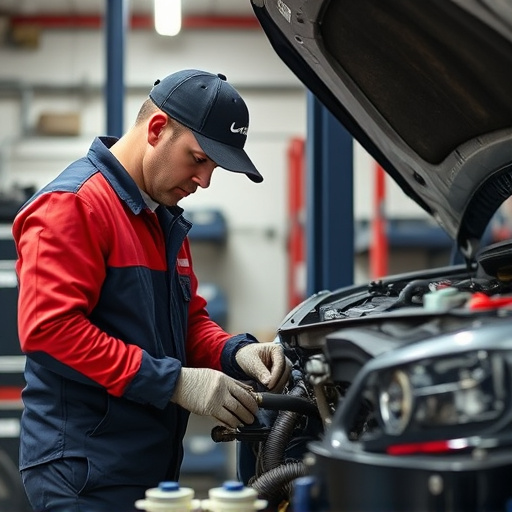
When a vehicle experiences an accident, the exhaust system is often one of the first components to require attention due to its exposure to high temperatures and impact forces during a collision. The bent or damaged exhaust pipes not only pose safety risks but can also lead to more severe engine damage if left unattended. As such, proper exhaust system collision repair involves more than just straightening out the pipes; it’s a meticulous process that demands specialized skills and knowledge.
Safety is paramount in any automotive body work, especially when dealing with exhaust systems. Mechanics must employ various safety measures to ensure both their well-being and that of other individuals nearby. Personal protective equipment (PPE), including gloves, eye protection, and aprons, is essential to safeguard against hot debris and sharp edges. Additionally, a well-ventilated workspace helps prevent the accumulation of harmful fumes and gases, minimizing health risks for repair technicians. Moreover, using high-quality replacement parts and adhering to manufacturer guidelines ensures the structural integrity and longevity of the exhaust system after repair, further emphasizing the importance of professional vehicle repair services in exhaust system collision repair.
Bent exhaust pipes, often a result of accidents, can be effectively repaired by mechanics using specialized tools and techniques. Understanding the specific damage and adhering to safety measures is crucial in performing an accurate exhaust system collision repair. By mastering these skills, professionals ensure not only the structural integrity of vehicles but also maintain optimal engine performance.

